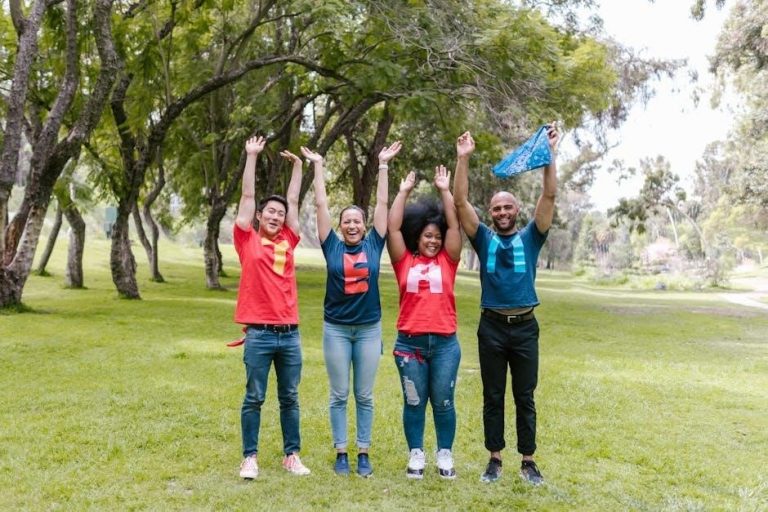Written by Daniel Levi and David A. Askay‚ this 6th edition explores core concepts like goals‚ norms‚ and cooperation‚ helping teams enhance collaboration and performance effectively.
Overview of the Book
Group Dynamics for Teams 6th Edition by Daniel Levi and David A. Askay is a comprehensive guide bridging psychological research and practical organizational behavior. Published by SAGE Publications‚ it focuses on enhancing teamwork‚ communication‚ and collaboration. The book explores core concepts like goals‚ norms‚ and conflict resolution‚ offering tools to improve team performance. Designed for both students and professionals‚ it provides real-world examples and case studies to illustrate key principles. This edition emphasizes the importance of emotional intelligence and leadership in fostering effective group dynamics. With its engaging style and practical insights‚ it serves as an essential resource for understanding and improving team interactions in various settings.
Importance of Group Dynamics in Modern Teams
Understanding group dynamics is crucial for modern teams‚ as it enhances communication‚ collaboration‚ and conflict resolution. By examining how individuals interact within groups‚ teams can improve productivity and employee satisfaction. This knowledge helps leaders identify and address potential issues‚ fostering a positive work environment. The principles outlined in Group Dynamics for Teams 6th Edition provide practical strategies for optimizing team performance. Effective group dynamics ensure that diverse perspectives are valued‚ leading to innovative solutions and shared goals. In today’s fast-paced‚ collaborative work environments‚ mastering these dynamics is essential for achieving organizational success and maintaining a competitive edge in the marketplace.

Core Concepts in Group Dynamics
Group dynamics involve understanding how individuals interact‚ form roles‚ and establish norms within teams‚ shaping behavior and performance. These concepts are vital for effective teamwork and collaboration.
Understanding Group Goals and Objectives
Group goals and objectives are the foundation of effective teamwork‚ providing direction and purpose. Clear goals align team efforts‚ foster commitment‚ and ensure collective progress. Shared objectives help define roles‚ prioritize tasks‚ and measure success. Teams with well-defined goals experience enhanced motivation and focus. Goal-setting processes‚ such as SMART criteria‚ promote clarity and attainability. Aligning group objectives with organizational vision ensures relevance and accountability. Effective leadership plays a crucial role in communicating and reinforcing goals‚ fostering a shared sense of purpose. When team members understand and embrace common objectives‚ collaboration improves‚ and overall performance is elevated.
Role of Norms in Shaping Team Behavior
Norms are informal rules that govern team behavior‚ influencing how members interact and make decisions. They emerge from shared values‚ experiences‚ and cultural expectations‚ shaping the team’s identity. Norms can enhance collaboration by creating consistency and predictability‚ but they can also stifle creativity if overly rigid. Positive norms‚ such as respect and open communication‚ foster a productive environment‚ while negative norms‚ like avoidance of conflict‚ can hinder progress. Leaders play a crucial role in establishing and reinforcing healthy norms‚ ensuring they align with organizational goals. Understanding and managing norms is essential for building a cohesive‚ high-performing team that adapts to challenges effectively.
Cooperation and Collaboration Within Teams
Cooperation and collaboration are essential for achieving shared goals‚ fostering trust‚ and enhancing overall team performance. Cooperation involves team members working together willingly‚ while collaboration requires active engagement and shared responsibility. Both processes thrive when communication is clear‚ roles are defined‚ and mutual respect exists. Trust and accountability are critical‚ as they encourage members to contribute openly and rely on one another. Leaders play a key role in promoting a collaborative culture by setting expectations and providing tools for effective interaction. When teams collaborate effectively‚ they leverage diverse perspectives‚ leading to innovative solutions and stronger outcomes. Collaboration is a cornerstone of successful teamwork.
Conflict Resolution Strategies
Conflict resolution is a critical aspect of group dynamics‚ as disagreements can hinder progress and morale. Effective strategies include active listening to understand perspectives‚ remaining neutral to ensure fairness‚ and focusing on shared goals. Encouraging open communication helps address issues early‚ preventing escalation. Compromise and collaborative problem-solving are key‚ as they foster mutual satisfaction. Teams should also establish clear processes for resolving disputes‚ such as mediation or voting. Learning from conflicts can improve future interactions. When handled constructively‚ conflicts can strengthen relationships and enhance teamwork. Effective resolution strategies ensure that disagreements become opportunities for growth rather than obstacles to success. Teams thrive when conflicts are managed wisely.
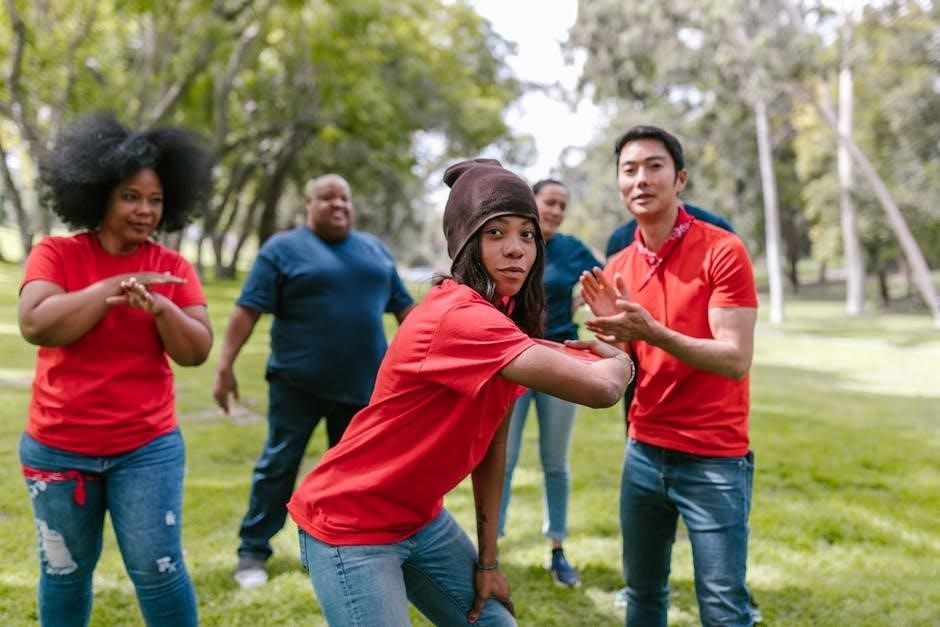
Application of Group Dynamics in the Workplace
Applying group dynamics in the workplace enhances collaboration‚ improves communication‚ and boosts productivity. It fosters a positive environment‚ aligns team goals with organizational objectives‚ and strengthens overall performance.
Enhancing Communication Skills
Effective communication is the cornerstone of successful group dynamics. By fostering open dialogue‚ active listening‚ and clarity‚ teams can ensure ideas are shared and understood. Group dynamics encourage feedback loops‚ enabling members to refine their messaging and adapt to others’ perspectives. This leads to better collaboration‚ reduced misunderstandings‚ and enhanced problem-solving. Leaders play a key role in modeling transparent communication‚ while team members benefit from learning to articulate thoughts clearly. Improved communication strengthens trust‚ aligns goals‚ and fosters a cohesive work environment‚ ultimately driving productivity and innovation within organizations. Regular practice and training can further refine these skills for optimal team performance.
Leadership Styles and Their Impact

Leadership styles significantly influence group dynamics‚ shaping team behavior and outcomes. Transformational leaders inspire and motivate members‚ fostering innovation and commitment. Transactional leaders focus on exchanges‚ offering rewards for performance‚ which can enhance efficiency but may limit creativity. Laissez-faire leaders provide autonomy‚ empowering experienced teams but potentially leading to disorganization. Authoritative leaders set clear visions‚ while democratic leaders encourage participation‚ boosting engagement. Each style impacts trust‚ collaboration‚ and decision-making. The effectiveness of a leadership style depends on the team’s needs and context. Adapting leadership approaches can enhance team cohesion‚ productivity‚ and satisfaction‚ ensuring alignment with organizational goals and fostering a positive work environment for optimal results.
Decision-Making Processes in Teams
Decision-making processes in teams are critical for achieving objectives and ensuring alignment with organizational goals. Groups often use methods like consensus‚ majority vote‚ or delegated decisions‚ balancing efficiency and inclusivity. Effective decision-making involves gathering diverse perspectives‚ analyzing options‚ and evaluating potential outcomes. However‚ challenges such as groupthink or dominance by outspoken members can hinder quality. Teams must employ strategies like the Delphi technique or nominal group technique to enhance participation and reduce bias. Group Dynamics for Teams 6th Edition emphasizes the importance of structured approaches to foster collaboration and accountability‚ ensuring decisions reflect the team’s collective intelligence and drive successful outcomes. Clear communication and defined roles further optimize these processes.
Emotional Intelligence and Team Dynamics
Emotional intelligence (EI) plays a pivotal role in shaping team dynamics by enhancing interpersonal interactions and fostering a positive work environment. High EI enables team members to recognize‚ understand‚ and manage their own emotions‚ as well as empathize with others. This fosters trust‚ collaboration‚ and effective communication‚ reducing misunderstandings and conflicts. Teams with high EI adapt better to challenges‚ leveraging diverse perspectives to achieve shared goals. Leaders with strong EI can motivate and inspire team members‚ while individuals with EI contribute to a supportive and inclusive culture. Group Dynamics for Teams 6th Edition highlights how EI strengthens relationships‚ driving team resilience and overall performance.
Benefits of Understanding Group Dynamics
Understanding group dynamics enhances team cohesion‚ improves problem-solving‚ and boosts morale‚ leading to more effective collaboration and better outcomes in team-based environments.
Improved Team Performance
Understanding group dynamics significantly enhances team performance by aligning individual and collective goals. When team members grasp how group dynamics influence their interactions‚ they can optimize communication‚ reduce conflicts‚ and clarify roles. Effective leadership emerges as leaders understand how to motivate and guide their teams more effectively. Improved collaboration fosters a more cohesive and productive work environment. By addressing potential issues early‚ teams can maintain momentum and achieve their objectives more efficiently; Overall‚ understanding group dynamics equips teams with the tools to perform at a higher level‚ leading to greater success in both projects and overall organizational goals ultimately.
Enhanced Problem-Solving Abilities
Group dynamics play a crucial role in enhancing problem-solving abilities within teams. Diverse perspectives and collective intelligence lead to more innovative solutions. When team members collaborate effectively‚ they can identify and address challenges more thoroughly. Open communication fosters the sharing of ideas‚ while structured approaches ensure that decisions are well-informed. Teams that understand group dynamics can allocate tasks based on strengths‚ leading to efficient resolution of complex issues. This collaborative environment not only improves the quality of solutions but also accelerates the problem-solving process‚ making teams more adaptable to changing situations and better equipped to handle future challenges effectively.
Boosting Team Morale and Engagement

Understanding group dynamics significantly contributes to boosting team morale and engagement. When team members feel valued and supported‚ their motivation and commitment increase. Positive interactions‚ recognition of contributions‚ and a sense of belonging foster a productive environment. Group dynamics encourage open communication‚ reducing conflicts and enhancing trust. Engaged teams are more likely to take ownership of their work‚ leading to higher satisfaction and performance. By promoting inclusivity and encouraging participation‚ leaders can create a culture where team members thrive. This‚ in turn‚ strengthens overall team cohesion and drives success‚ making morale and engagement essential outcomes of effective group dynamics in modern teams.
Practical Strategies for Effective Teamwork
Setting clear goals‚ fostering open communication‚ encouraging active listening‚ and providing regular feedback are essential strategies to enhance teamwork. These practices promote collaboration and shared accountability.
Team Building Activities
Team building activities are structured exercises designed to enhance trust‚ communication‚ and collaboration among team members. These activities‚ such as trust falls‚ problem-solving challenges‚ and collaborative games‚ foster camaraderie and shared goals. They encourage individuals to step out of their comfort zones‚ promoting mutual understanding and respect. Regular team building exercises can improve interpersonal relationships‚ reduce conflicts‚ and strengthen collective problem-solving skills. By creating a sense of unity‚ these activities help teams align with common objectives‚ leading to increased productivity and a more positive work environment. Effective team building is a cornerstone of successful group dynamics‚ as highlighted in the 6th edition.
Fostering a Positive Team Environment
Fostering a positive team environment involves creating a culture of respect‚ empathy‚ and inclusivity. Leaders play a crucial role by promoting open communication and encouraging team members to share ideas. Recognizing individual contributions and celebrating collective achievements enhances morale and motivation. Establishing clear expectations and providing constructive feedback helps build trust and accountability. Encouraging work-life balance and supporting professional development also contributes to a positive atmosphere. A supportive environment where diversity is valued and inclusion is prioritized ensures that all team members feel empowered to contribute their best. This‚ in turn‚ strengthens collaboration and overall team effectiveness‚ as emphasized in the 6th edition.

Managing Diversity and Inclusion
Managing diversity and inclusion is essential for creating a harmonious and productive team environment. Diversity brings unique perspectives and strengths‚ while inclusion ensures that all members feel valued and respected. Leaders should implement policies and practices that promote equity and address biases. Training programs on cultural competence and unconscious bias can foster understanding and empathy. Encouraging diverse representation in decision-making processes and creating safe spaces for open dialogue further supports inclusion. Recognizing and celebrating differences strengthens team cohesion and leverages the full potential of a diverse workforce‚ as highlighted in the 6th edition. This approach enhances innovation and overall team success.
Integrating Technology for Better Collaboration
Integrating technology enhances collaboration by providing tools that streamline communication‚ organization‚ and task management. Platforms like Slack‚ Microsoft Teams‚ and Trello foster real-time interaction and transparency. Video conferencing tools such as Zoom enable remote teams to maintain face-to-face connections. Collaborative software like Google Workspace allows simultaneous document editing‚ promoting efficiency. Technology also supports data-driven decision-making by providing analytics and tracking progress. However‚ over-reliance on tools can create distractions‚ so balancing technology use with interpersonal skills is crucial. The 6th edition emphasizes that effective integration of technology strengthens group dynamics by aligning team efforts and improving overall productivity‚ ensuring seamless collaboration in diverse settings.
The 6th edition emphasizes understanding group dynamics to enhance team effectiveness through practical strategies‚ balancing theory with application to foster successful collaboration and productivity in diverse settings.
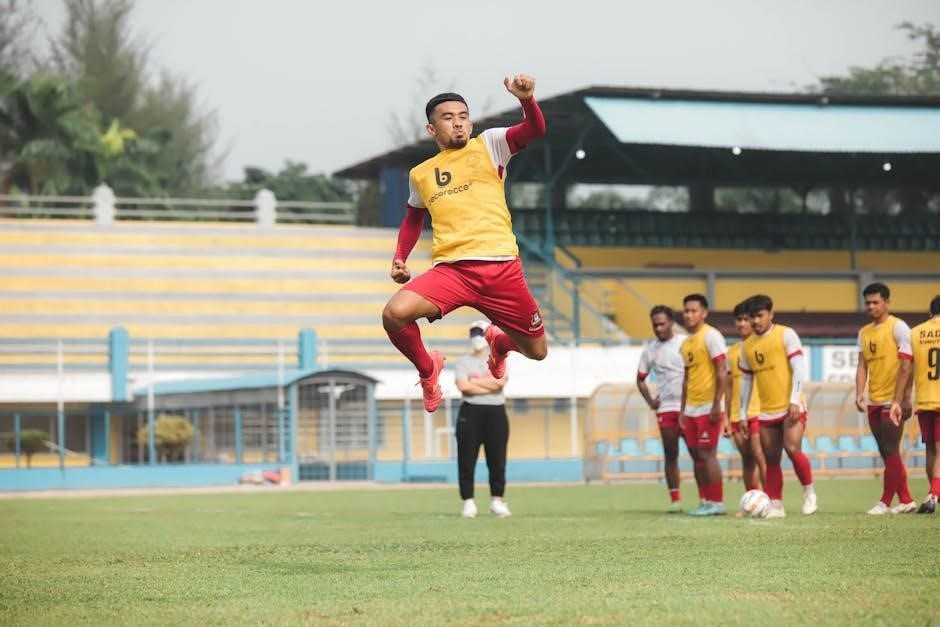
Summarizing Key Takeaways
Group Dynamics for Teams 6th Edition highlights the importance of understanding how teams function to maximize productivity. Key takeaways include aligning group goals with team member motivations‚ fostering a collaborative environment‚ and addressing conflicts effectively. Leadership styles significantly impact team performance‚ and emotional intelligence plays a crucial role in maintaining harmony. Enhancing communication and decision-making processes are essential for success. The book also emphasizes the value of diversity‚ inclusion‚ and leveraging technology to enhance teamwork. Practical strategies‚ such as team-building activities and promoting a positive team culture‚ are provided to help organizations build high-performing teams. These insights are invaluable for fostering cohesion and achieving organizational objectives.
Future Trends in Group Dynamics
Future trends in group dynamics emphasize the evolution of remote and hybrid teams‚ driven by technology advancements. Artificial intelligence tools will enhance collaboration and decision-making processes. Diversity and inclusion will remain critical‚ fostering cross-cultural understanding. Emotional intelligence will gain prominence in managing complex team dynamics. Virtual reality may revolutionize team-building activities‚ offering immersive experiences. Leadership will shift toward more flexible‚ adaptive styles to accommodate changing work environments. The integration of data analytics will help teams make informed decisions. Balancing technology use with face-to-face interactions will be essential for maintaining trust and cohesion. These trends underscore the dynamic nature of teamwork in the digital age.
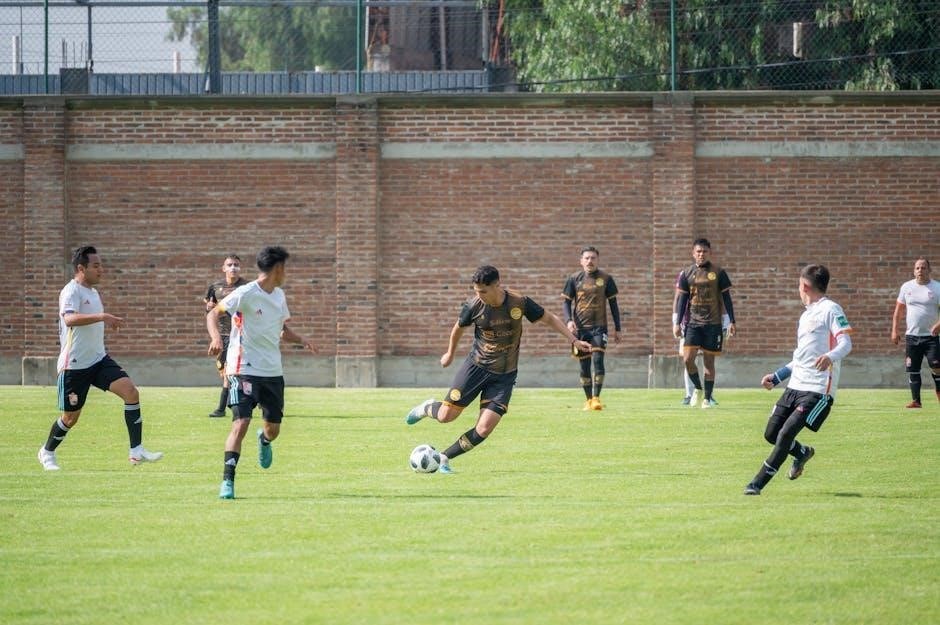
Additional Resources
Explore recommended books‚ online courses‚ and tutorials to deepen your understanding of group dynamics. Utilize workshops and forums for practical insights and continued learning opportunities.
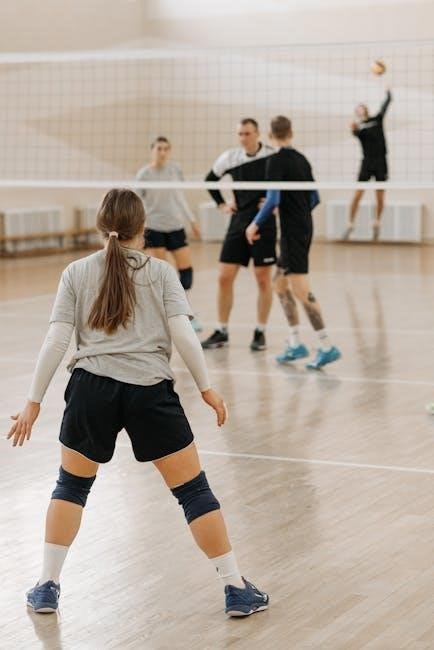
Recommended Reading
Enhance your knowledge with Group Dynamics for Teams 6th Edition by Daniel Levi‚ offering insights into team behavior and collaboration. Explore The Five Dysfunctions of a Team by Patrick Lencioni for practical team-building strategies. Emotional Intelligence: Why It Can Matter More Than IQ by Daniel Goleman provides valuable perspectives on team dynamics. Additionally‚ The Wisdom of Teams by Jon Katzenbach and Douglas Smith is a must-read for understanding team success. These books‚ along with academic journals and case studies‚ will deepen your understanding of group dynamics and improve team performance. They offer actionable strategies and real-world examples to enhance collaboration and leadership skills.
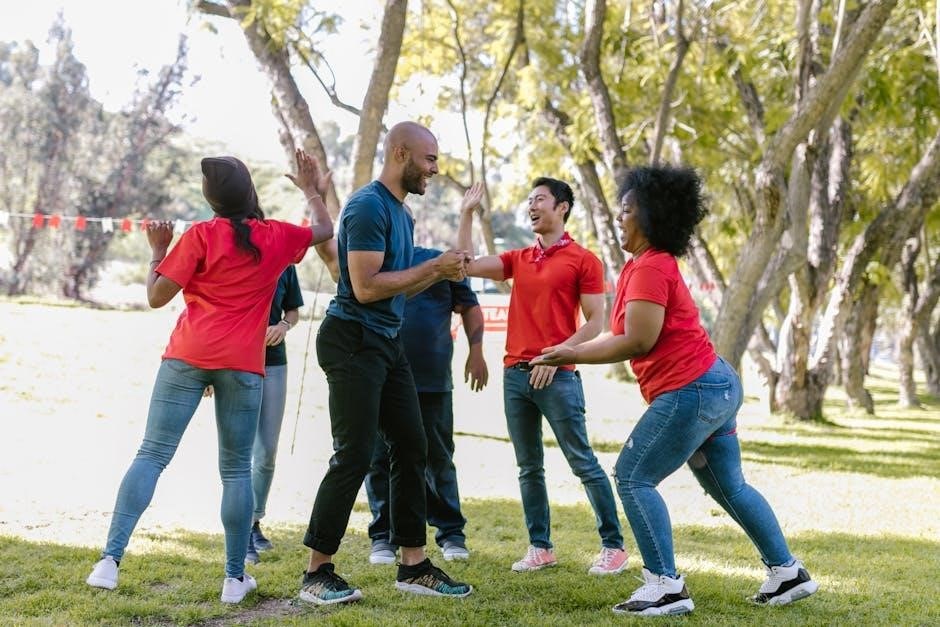
Online Courses and Tutorials
Expand your understanding of group dynamics through online courses like “Teamwork Skills: Communicating Effectively in Groups” on Coursera. Platforms like LinkedIn Learning offer tutorials on “Building High-Performing Teams” and “Conflict Resolution Skills.” edX provides courses such as “Leadership and Teamwork” from universities worldwide. These resources cover topics like communication strategies‚ collaboration tools‚ and emotional intelligence. They also offer practical exercises and real-world examples to enhance teamwork. Enroll in these courses to gain actionable insights and improve your ability to lead and participate effectively in team settings. Many are self-paced‚ allowing flexibility to learn at your convenience and apply concepts immediately.
